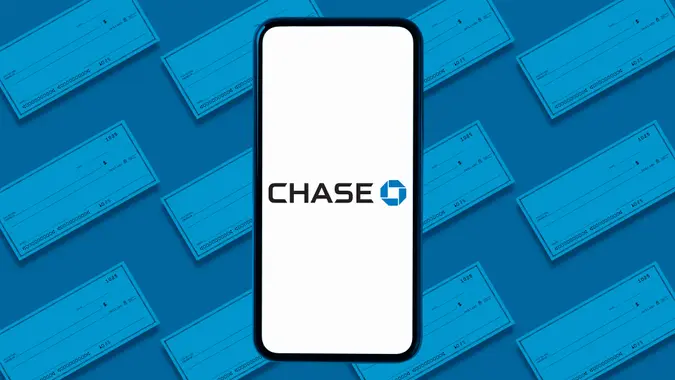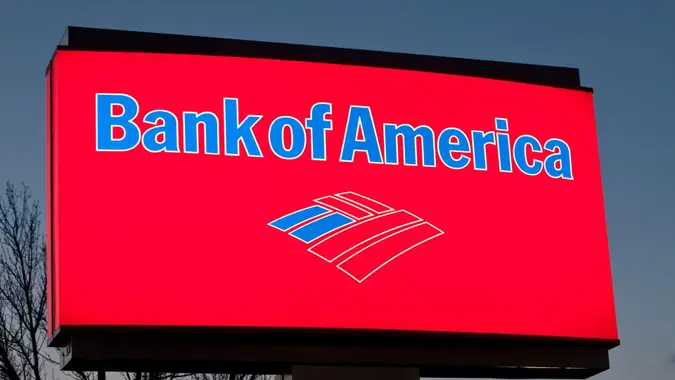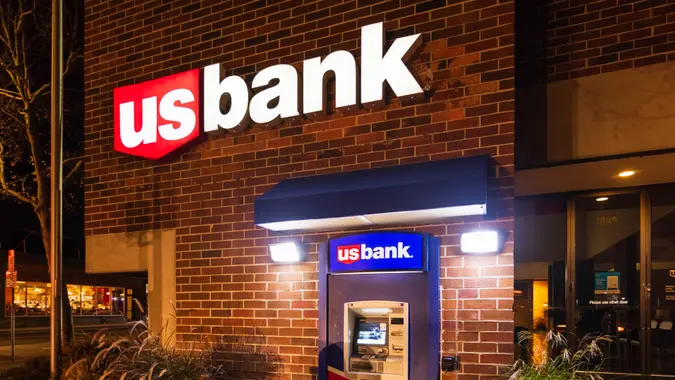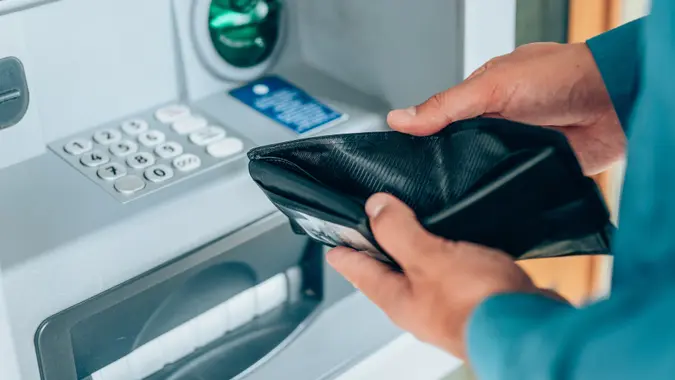What Is a High-Yield Checking Account and Why You Need One

Commitment to Our Readers
GOBankingRates' editorial team is committed to bringing you unbiased reviews and information. We use data-driven methodologies to evaluate financial products and services - our reviews and ratings are not influenced by advertisers. You can read more about our editorial guidelines and our products and services review methodology.

20 Years
Helping You Live Richer

Reviewed
by Experts

Trusted by
Millions of Readers
A high-yield checking account is a type of checking account that allows you to earn above-average interest on your balance — sometimes up to 10 times more than a regular checking account. It combines the convenience of a standard checking account with the earning power of a savings account.
In this guide, we’ll break down exactly how high-yield checking works, why it’s gaining popularity and how to choose the best one for your lifestyle — especially if you’re looking to maximize your cash without locking it away in a long-term account.
What Makes a Checking Account “High-Yield”?
High-yield checking accounts set themselves apart by offering elevated interest rates — also known as APY (Annual Percentage Yield) — on your everyday balance.
According to the FDIC, the average interest rate on a standard checking account is just 0.07% APY as of June 2025, while many high-yield checking accounts offer rates above 3.00% or more for qualifying balances, making them a significantly more rewarding place to park your money if you meet activity requirements.
What Kind of Interest Can You Expect?
Roughly 63% of checking accounts in the U.S. are non-interest-bearing, according to the Federal Reserve’s most recent Survey of Consumer Finances, highlighting how many Americans could be missing out on earnings from high-yield checking alternatives.
Here’s what to expect from your high-interest savings account:
- Typical high-yield checking accounts offer APYs between 1.00% and 5.00%, though some promotions go even higher.
- In contrast, many standard checking accounts offer 0.01% or no interest at all.
So if you’re keeping a $10,000 balance, a high-yield account earning 3.00% APY could net you $300 annually, compared to just $1 with a traditional checking account.
How Does It Compare to Other Accounts?
| Feature | High-Yield Checking | Regular Checking | High-Yield Savings |
|---|---|---|---|
| Interest Earned | High | Low or None | High |
| Liquidity | Daily access | Daily access | Limited (by transfers) |
| Minimum Requirements | Often required | Low or none | Usually required |
Common Requirements to Earn the High Yield
To qualify for the top rates, you may need to:
- Maintain a certain balance (usually under a cap, like $25,000)
- Make a minimum number of debit card transactions (e.g., 10 per month)
- Set up direct deposit
- Enroll in e-statements
How Do High-Yield Checking Accounts Work?
Nearly 70% of U.S. adults now prefer managing their finances digitally, and many are shifting to online banks and fintechs offering high-yield checking accounts that combine convenience with competitive returns. High-yield savings accounts sit at the crossroads of both of those preferences.
High-yield checking accounts work similarly to regular ones but with a few added rules.
Eligibility Criteria
You’ll likely need to meet monthly activity benchmarks like:
- 10+ debit card purchases
- One or more direct deposits or ACH transfers
- Paperless statement enrollment
If you don’t meet these conditions, your APY may drop to a base rate (often 0.01%).
Interest Calculation
Interest is typically:
- Compounded daily or monthly
- Paid out monthly
- Subject to balance tiers (e.g., 4.00% APY on first $10,000, then 0.25% on anything above)
Account Caps
Many accounts have a cap on the balance eligible for high interest. For example:
- First $15,000: 3.50% APY
- Balance over $15,000: 0.10% APY
High-Yield Checking Account Pros and Cons
High-yield checking accounts can be especially useful for retirees or anyone maintaining higher balances. But there are trade-offs.
Pros
- Stronger returns on idle cash
- No need to move money between accounts
- May come with perks like ATM fee refunds or no monthly maintenance fees
Cons
- Must meet monthly activity requirements to avoid losing interest
- APY may change if rates shift or if account terms are updated
- Not ideal if you don’t use debit cards often
If you’re looking for additional information or a more detailed look at the pros and cons, check out our full breakdown here.
Are High-Yield Checking Accounts Worth It?
The number of Americans opening high-yield checking accounts grew by nearly 30% between 2022 and 2024, reflecting growing awareness and demand for higher returns on everyday banking.
A high-yield checking account might be worth it for you if you want to earn high rates on your checking, and you have the means and wherewithal to meet the bank’s requirements each and every month.
You’ll have to track your account activity carefully. In a typical example, to get the top rate with Lake Michigan Credit Union’s Max Checking high-yield account, you must post 10 debit or credit card purchases and log in to online or mobile banking at least four times by 8 p.m. on the last day of the month. If you don’t meet these criteria, or if your purchase transactions aren’t clear by the deadline, you earn no interest at all that month.
You’re likely to be happy with your high-yield account if its requirements align with how you already bank. Whereas 10 debit or credit purchases might be unmanageable for someone who only shops once a week and mostly uses cash, someone who uses debit or credit to buy coffee on the way to work each day wouldn’t give it a second thought.
If keeping tabs on complicated requirements is more work than you want to do, consider opening a standard checking account instead. Keep just the amount you need for expenses in that account, and use a high-yield savings account for the rest.
How To Qualify for a High-Yield Checking Account
High-yield checking account requirements vary by bank, and sometimes, by account. For example, a bank might have tiered account requirements that pay a good Annual Percentage Yield (APY) to those who meet minimum requirements, and an even better APY to those who meet all requirements. Account requirements may include:
- A minimum opening deposit amount
- A minimum number of monthly transactions using the account’s linked debit card
- A minimum number of monthly transactions using a credit card linked to the account
- Direct deposit or other monthly deposit requirements.
- A minimum balance to earn interest
- Receive eStatements
Qualifying for the high yield is relatively easy if you choose an account with requirements that align with how you already manage your money and your accounts. Using your debit or credit card as the payment method for household expenses like utility bills, insurance premiums and subscriptions can also help you qualify.
Best High-Yield Checking Accounts in 2025
When choosing a high-yield checking account, consider account requirements, fees and accessibility before focusing on interest rates. Here are some of the higher APYs offered currently:
| Financial Institution | Account | APY | Monthly Requirements To Earn Top APY |
|---|---|---|---|
| Presidential Bank | Advantage Checking | Up to | -$500 minimum opening deposit -$500 monthly direct deposits -Limit check writing to three checks per month -Balance up to $25,000 (3.56% APY on higher balances) -Rate drops to 0.10% APY if requirements are not met |
| Axos Bank | Rewards Checking | Up to | -$1,500 monthly direct deposits -10 debit transactions or link to Personal Finance Manager -$2,500 balance in Axos Invest Managed Portfolios Account -$2,500 balance in Axos Self Directed Trading Account -Use the account to make eligible Axos loan payments -Balance up to $50,000 (no interest on larger balances) |
| Consumers Credit Union | Rewards Checking | Up to | -eDocument enrollment -12 debit card purchases -$500 in mobile, ACH or direct deposits -$1,000 in CCU credit card purchases -Balance up to $10,000 (lower rates for higher balances) -Rate drops if conditions are not met |
| Lake Michigan Credit Union | Max Checking | on balances up to $15,000 | -Direct deposit or ACH deposit -10 posted debit or credit card purchases -4 online or mobile banking logins -eStatement enrollment -Balance up to $15,000 (no interest on balances above $15,000) -No interest if conditions are not met |
| SoFi®, Member FDIC | Checking and Savings | Up to on savings balances and on checking | -No requirements |
How High-Yield Checking Accounts Compare to Other Accounts
High-yield checking accounts are just one of the bank account types that can earn you high yields.
Savings accounts are the type of account most associated with the term “high yield.” Whereas checking accounts are transactional accounts meant for purchases and bill payments, savings accounts are designed to hold money you plan to use in the future.
Money market accounts are a type of savings account, but they typically offer check-writing privileges similar to checking accounts. They’re best for those who want a savings account, primarily, but who’d also benefit from the ability to make occasional payments from the account.
Tips for Maximizing a High-Yield Checking Account
Generous as high-yield checking APYs are, getting the most from your account requires a proactive approach to banking. Here are some tips for maximizing your account.
- Read your account disclosures carefully. Pay particular attention to the requirements and the monthly deadline for meeting them to earn the top APY — the deadline is not necessarily the last day of the month.
- Keep the balance high enough to meet account minimums and low enough that the top APY applies to your entire balance.
- Add your debit card and/or credit card as the payment method for as many of your monthly bills as possible to help ensure that you meet minimum transaction requirements.
- Schedule reminders for weekly check-ins with your account via online or mobile banking.
- Research high-yield savings accounts to see if you can find a better rate than your high-yield checking account offers. You might be better off using a simple, fee-free checking account alongside high-yield savings.
How To Open a High-Yield Checking Account
Selecting and opening a new bank account might seem like a daunting task, but this step-by-step guide will simplify the process.
- Compare accounts. Consider and compare the account requirements, first of all, because they’ll determine whether you’ll qualify for the high yield. Also consider the following features to find the best checking account for your needs:
- Fees: Take a close look at the fee schedule of any bank you’re considering so that you know what a high-yield account may cost you.
- Accessibility: Consider how easy it’ll be to access your money. The number of ATMs and branch locations can impact convenience. If banking online, verify how you’ll make deposits.
- Interest rate: Compare interest rates to make your final decision.
- Gather the information you need to open an account. In addition to your name, address and phone number, you’ll need your Social Security number and government photo ID. Also, make a note of the bank account or other information necessary for funding your new account.
- Visit the bank’s website to open an account online. Alternatively, head to a branch location to apply in person. If you plan to work with a bank instead of a credit union, you’ll need to join before you can open an account — check the requirements on the credit union’s website to make sure you qualify.
- Fund the account.
Final Take: Should You Open a High-Yield Checking Account?
If you’ve ever asked, “What is a high-yield checking account?” the answer is simple: it’s a smart way to earn interest on money you’re already spending or saving. With APYs that compete with savings accounts and the flexibility of checking, they offer the best of both worlds — especially for savvy, high-balance users.
If you maintain a high balance in your checking account, a high-yield account may be a good option for you. While you may be tempted to choose the account with the highest APY, you should also consider account fees and requirements. The due diligence you do now can pay off with a positive banking experience and lucrative interest earnings in your account.
Just remember to read the terms, meet the monthly requirements and compare top picks like Axos or SoFi to find the best fit for your banking habits.
FAQs About High-Yield Checking Accounts
Here are the answers to some of the most frequently asked questions about high-yield savings accounts and how they work:- What is a high-yield checking account?
- It’s a checking account that pays higher interest (APY) than typical checking accounts, usually with a few monthly requirements.
- Do high-yield checking accounts earn like savings accounts?
- Yes -- many offer rates that rival or beat high-yield savings, especially on balances up to $25,000.
- What are the usual requirements?
- Most accounts ask for direct deposit, debit card usage and e-statements to unlock the best rate.
- Are there any fees or limits?
- Some charge maintenance or overdraft fees if conditions aren’t met. Others cap interest earnings at a certain balance.
- Who should open a high-yield checking account?
- They're ideal for people who keep money in a checking account for everyday expenses but want to earn interest without moving funds to a separate savings account.
Rates are subject to change; unless otherwise noted, rates are updated periodically. All other information on accounts is accurate as of July 1, 2025.
Editorial Note: This content is not provided by any entity covered in this article. Any opinions, analyses, reviews, ratings or recommendations expressed in this article are those of the author alone and have not been reviewed, approved or otherwise endorsed by any entity named in this article.
Annual percentage yield (APY) is variable and subject to change at any time. Rates are current as of 12/23/25. There is no minimum balance requirement. Fees may reduce earnings. Additional rates and information can be found at https://www.sofi.com/legal/banking-rate-sheet
Earn up to 4.00% Annual Percentage Yield (APY) on SoFi Savings with a 0.70% APY Boost (added to the 3.30% APY as of 12/23/25) for up to 6 months. Open a new SoFi Checking and Savings account and pay the $10 SoFi Plus subscription every 30 days OR receive eligible direct deposits OR qualifying deposits of $5,000 every 31 days by 1/31/26. Rates variable, subject to change. Terms apply at sofi.com/banking#2. SoFi Bank, N.A. Member FDIC.
Our in-house research team and on-site financial experts work together to create content that’s accurate, impartial, and up to date. We fact-check every single statistic, quote and fact using trusted primary resources to make sure the information we provide is correct. You can learn more about GOBankingRates’ processes and standards in our editorial policy.
- Cornerstone Advisors "Cornerstone Research Report: What’s Going On In Banking 2024"
- FDIC "Survey of Consumer Finances (SCF)"
- FDIC "National Rates and Rate Caps – June 2025"
- Deloitte "Digital Banking Maturity 2024"
 Written by
Written by  Edited by
Edited by 























